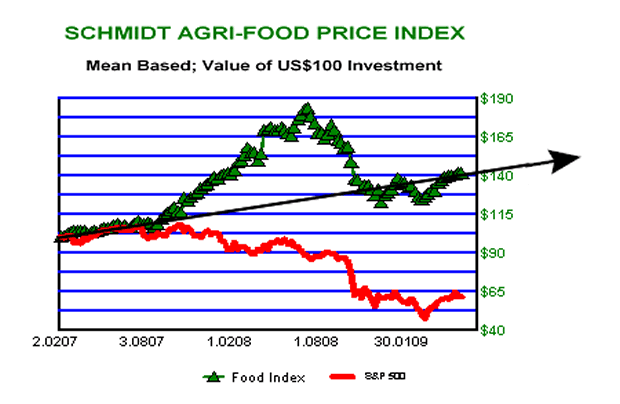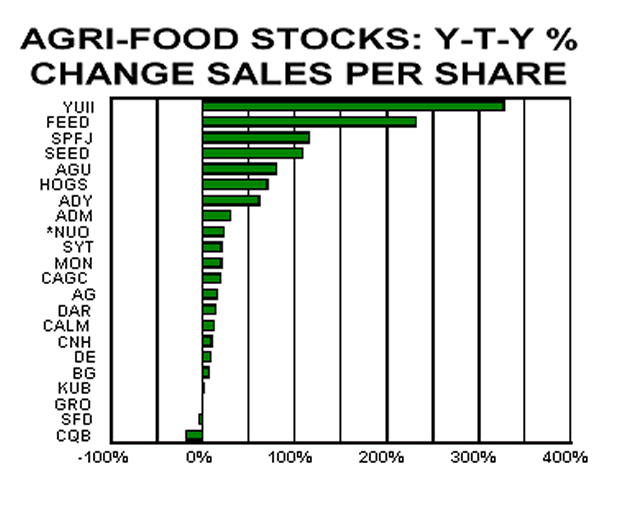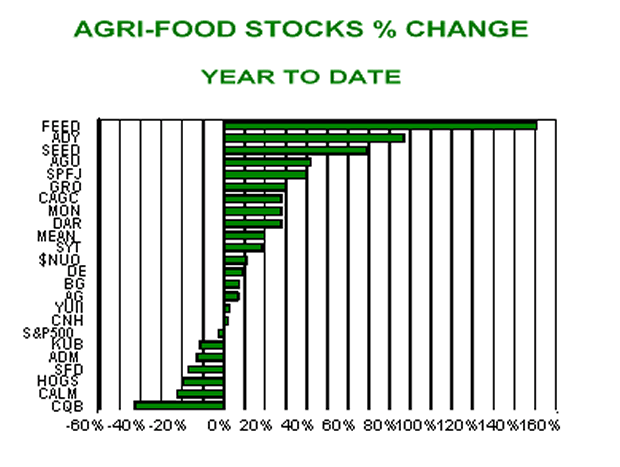Deflation Runs into the Brick Wall of Chinese Agri-Foods Inflation
Commodities / Agricultural Commodities May 18, 2009 - 04:02 PM GMTBy: Ned_W_Schmidt
 The road to deflation was a short one. It ran smack into reality. That reality is that the rest of the world does exist, and that North America is not the center of tomorrow's universe. The bursting of the credit fed hedge fund mania did yes hurt all markets. But, some of those markets are again being influenced by their structural, and longer term, dynamics. That China has not collapsed into a recession anywhere near the magnitude experienced by Western economies must come as a shock to many economists and strategists. They were wrong. That they do not understand the secular dynamics at play in Asia is now fairly obvious. In tomorrow's economic world, North America is slowly becoming a side show.
The road to deflation was a short one. It ran smack into reality. That reality is that the rest of the world does exist, and that North America is not the center of tomorrow's universe. The bursting of the credit fed hedge fund mania did yes hurt all markets. But, some of those markets are again being influenced by their structural, and longer term, dynamics. That China has not collapsed into a recession anywhere near the magnitude experienced by Western economies must come as a shock to many economists and strategists. They were wrong. That they do not understand the secular dynamics at play in Asia is now fairly obvious. In tomorrow's economic world, North America is slowly becoming a side show.

One of those markets ignoring the recession of the Western economies is Agri-Foods. Prices for Agri-Food commodities have moved out of the sell off brought about by the collapse of the hedge fund mania. In the chart above is plotted an index of the prices of the major Agri-Food commodities versus the S&P 500. The divergence in performance is readily apparent. That divergence indicates that different factors are at work on each.
While U.S. equities seem to have again found a ceiling, Agri-Food prices seem to have discovered a floor. That development is in direct contravention of the Street's popular view on commodities. While recognizing that a market correction in Agri-Food prices is possible, two factors argue for the continuation of the structural bull market in Agri-Food prices. First, the Chinese economy continues to grow, much to the consternation of the forecasting gurus. Second, global Agri-Food production will decline in 2009, perhaps more than many expect.
Agri-Food commodities are not made in factories. That reality still is not widely understood. The world cannot just build another "soybean factory". North American stocks of soybeans, for one example, may not end the 2009 crop season at a record low, but will be close to it. Corn crop in North America is likely to be far less than expected this year. Ending stocks of corn in 2010 could be near record lows.
These crops are not produced in factories. Rather, they are produced by a precise and timely combination of land, water, seed, fertilizer, weather, capital and labor. That combination came together in excellent fashion last year, perhaps near optimally. An optimal combination is already not possible for 2009. For once a crop year, or part of one, is lost, it is never replaced. The world can not run a "corn factory" an extra shift. Slowly and inexorably the world is moving toward a situation where shortages are only one crop failure somewhere in the world away.

While most of the Western economies are languishing in recession, many companies are having considerably less trouble generating sales. Business news continues to be filled with stories, though we know not why, of the problems in the automobile and banking industry. In contrast to that, the Agri-Food companies continue to show robust sales growth. As shown in the above chart, some are generating high rates of growth. Mean sales growth over this past year for the Agri-Food companies in the chart was about 38%.
These companies are not involved in such pseudo technologies as internet social groups or what other fad is being played as technology. These companies, each in their own way, are involved in some aspect of Agri-Food technology. These ventures are essential to the world, while social web sites are frivolous.
For example, YUII, top of the chart, produced 23 million day old broilers in the first quarter versus slightly less than five million a year ago. Go ahead, try to produce 23 million day old broilers in a 13 week period. One might discover that considerable "technology" and management skills are necessary to do so. The "technology" play of tomorrow is not a silly internet notion. Rather, the technology play of tomorrow is about how a world feeds itself with less productive farmland and a growing shortage of adequate water.
Further, Agri-Food prices stand to be major beneficiaries of the depreciation of the U.S. dollar. That comes about as most Agri-Foods are priced in dollars. Second, North America is a substantial producer of Agri-Foods. As the dollar depreciates, and more importantly as the Chinese Yuan appreciates over the decade ahead, Agri-Food prices will rise substantially. As the inevitable floating of the Chinese Yuan occurs, Agri-Food prices will move through a dramatic Wave III of an Elliot Wave framework. Ultimately, Agri-Food prices could rise to twice their current levels in a few years.

Investors looking beyond the media drivel on autos and banks are already benefitting from the Agri-Food structural wave. As shown in the chart above, investment money is flowing into this theme. As we have said many times before, Gold is an essential part of wealth management. Gold is necessary to defend your wealth from the depreciation of the dollar, and the demise of fiat currencies. However, your portfolio also needs an offensive element.
Agri-Food investments add an offensive element to your portfolio. They complement your Gold. In them, management and technology will leverage both the dollar's depreciation and inadequacy of the global Agri-Food production system. While the business media continues to dwell excessively on autos and banks, investors focused on tomorrow have a chance to prepare for it. Agri-Food investments combined with Gold may do much to enhance your wealth in the years ahead. Read more at http://home.att.net/~nwschmidt/Order_AgriValueRECENT.html
By Ned W Schmidt CFA, CEBS
AGRI-FOOD THOUGHTS is from Ned W. Schmidt,CFA,CEBS, publisher of The Agri-Food Value View , a monthly exploration of the Agri-Food grand cycle being created by China, India, and Eco-energy. To receive the most recent issue of this publication, use this link: http://home.att.net/~nwschmidt/Order_AgriValueRECENT.html
Copyright © 2009 Ned W. Schmidt - All Rights Reserved
Ned W Schmidt Archive |
© 2005-2022 http://www.MarketOracle.co.uk - The Market Oracle is a FREE Daily Financial Markets Analysis & Forecasting online publication.



